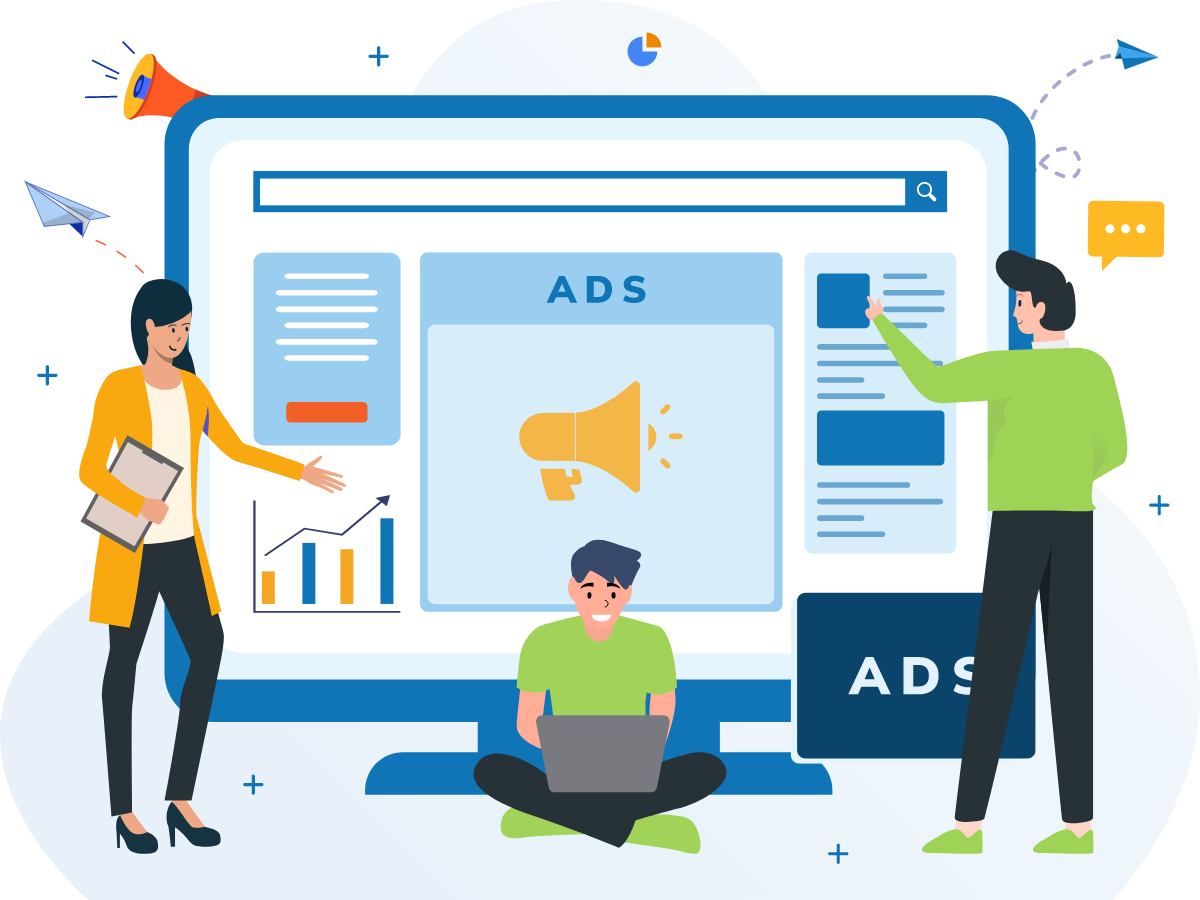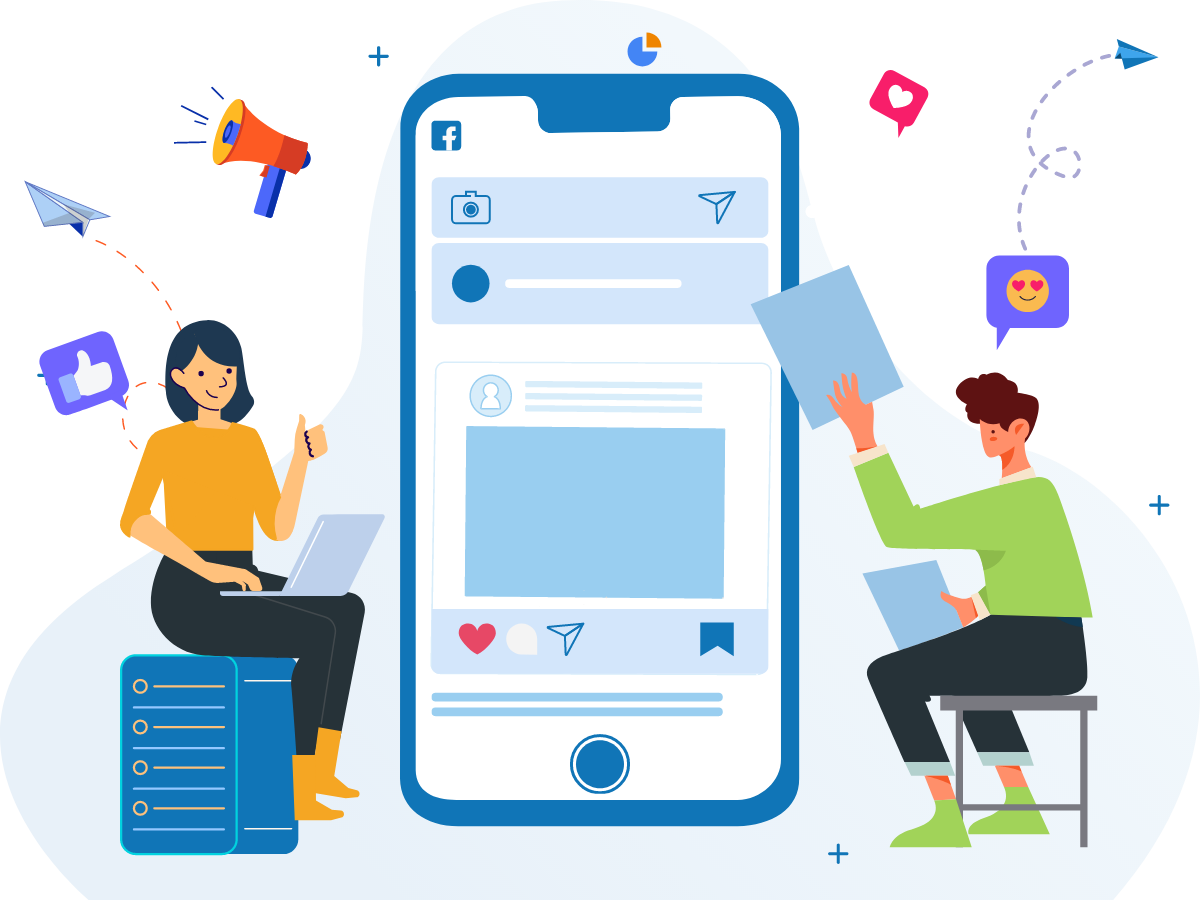
Rated ⭐ ⭐ ⭐ ⭐ ⭐ 4.9

Online advertising is the art of using the internet to market and advertise products and services. It is an excellent way to promote business across geographical boundaries without any limit. Online advertising is also called digital advertising, internet advertising, and web advertising.
Online advertisements can be text ads, display ads, native ads, banner ads, in-app ads, social media ads, video ads, email ads, and affiliated links.
To reach a large crowd, Google and Facebook are the best top-rated platforms. Google touches billions of customers via email, search, and other online activities, while Facebook currently has more than two billion active users.
Within the last ten years, online activity has drastically changed. We spend an average of 4 to 5 hours on the internet searching for information, products, and services. People want to get information faster with the ease of the internet, as it has become more empowering. It means more competition for brands to reach consumers.
So we have two tasks: showcase the brand to the customers ahead of the competitors. We need assistance in targeting the customers to our brand, so the online marketing/advertisements come in.
It helps in the following ways,
Businesses are ready to invest in potential platforms that help them grow and expand their business. There are many online marketing platforms present in the market, of which Google Ads and Facebook Ads are the most trusted platforms by both companies and customers.
So finally I am done here bcz I have messed up everything. It was not my fault I was clear with her. She thought i was talking doubt
We have many ad campaigns, of which
Google leads 75% of the search engine market globally. With more than 5 billion active users, it is the largest and leading search engine. Google Ads is a reliable place to advertise the brand and reach more new consumers.
Most businesses go with multiple ad campaigns for better results.
Google ads offer different ways of targeting,
There are a few ways through which we can do online marketing like
Display network: The ad shows on websites and apps when the keywords are similar to the website's content.
Video ads: We can show the ads on streaming sites like Google display network and Youtube.
Search network: The advertisement is at the top of the Google search result. It shows up based on the keywords.
Google Shopping: We can display our product based on high-intense searches and relevance in product search.
Google Ads Retargeting: Google enables us to remarket and reach the missed customers and retain business.
Google claims that marketers on their platform benefit two dollars for every one dollar spent by them. So, when we plan and implement accordingly, we get double the investment. However, some businesses receive increased ROI, while some receive less.
Let's see who all can benefit from Google Ads.
Businesses that wish to drive more traffic to convert can go with Google Ads. More than conversion, Google Ads is capable of doing so many things for your business. With the help of Youtube Ads and the Google Display network, we can provide customer support and build brand awareness.
Every brand has something to gain from Google Ads.

Facebook is a popular social media network that helps connect with people more than products and services. It helps to create memories rather than a one-time business. With two and a half billion active users, it is a cakewalk to succeed in the industry. For students at B2B and B2C companies, everyone is on Facebook.
The social media ad comes in a newsfeed ad style that integrates directly into feeds similar to the regular post and drives more clicks. It enables marketing via the right sidebar, video ads, and mobile news feed. In the carousel ads, we can add a variety of products in a single ad.
The intent of Facebook might be slightly different from Google but has diverse options to target a more substantial user base.
Facebook has the custom audience category that targets custom consumers based on diverse demographics- from designation to hobbies. It also helps retarget consumers towards the brand.
Facebook has an incredibly low CPC (cost per click). So, by spending fifty dollars a month, we can get several leads for the business. Additionally, we can share the Facebook campaign with a few social media strategies to create a drip campaign or set up chats and non-promotional messages. These methods have great responses with high potential messenger subscribers.

Google Ads and Facebook Ads are two distinct advertising platforms having individual ideologies and search intents. Both the platforms have tremendous potential to reach a large audience and are relatively similar in pricing. However, these platforms are popular and have billions of active users with varied targeting options.
Choosing between the two platforms is quite challenging. Facebook ads are marvelous when it comes to demographic targeting at a low cost. Google Ads has robust search intended conversions and leads. But based on the business objectives and marketing cost we can choose one platform.
How to do so?
Answering a few questions helps us determine the effective platform that suits the business.
Google Ads and Facebook Ads are the most popular among the other platforms in the market. We can select any online advertising platform that suits the business needs. Once we become comfortable with one platform, we can try using the other.
We can use both platforms and explore more ideas to target more audiences. Facebook is a phenomenal platform to build brand awareness and showcase the product/service to the audience. And we can use the brand name as the keyword in Google Ads and advertise under the brand name. Similarly, we can use the Google Ads data to target the Facebook audience to get more out of the ad expense incessantly. Vice versa uses Facebook data to reach the Google audience.
Using both platforms helps boost brand awareness and retarget ads, rather than relying on a single platform.
CONTACT US
Partner with Autuskey to build a remote, Agile software development team. Partner with Autuskey to build a remote, Agile software development team.

Rated ⭐ ⭐ ⭐ ⭐ ⭐ 4.9